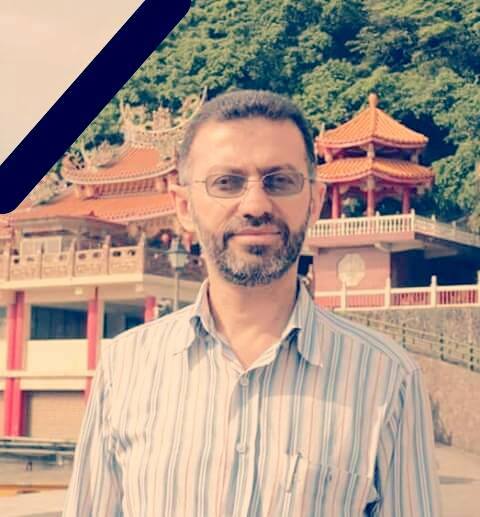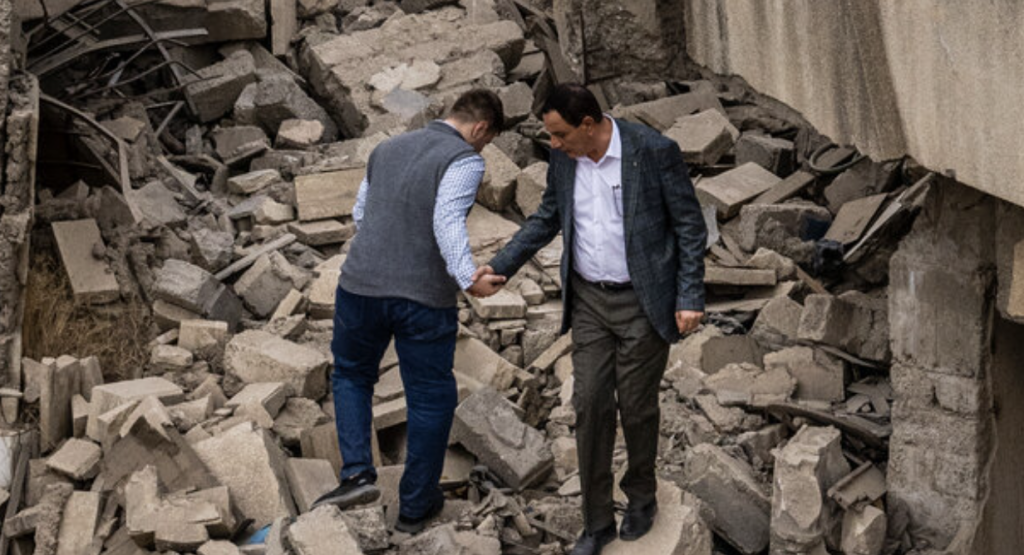Incident Code
Incident Date
Location
Geolocation
Geolocation
Airwars Assessment
(Previous Incident Code: I086)
A US airstrike on an ‘ISIS headquarters’ in Mosul in fact killed four members of one family – named as university professor Mohannad Al Rezzo (pictured below); his 18-year old son Najib Mohannad Al Rezzo (pictured below); his brother Bassim’s wife Miyada Rezzo and their 21-year old daughter Tuka Rezzo. The Coalition admitted the deaths 18 months later. In November 2019, the Dutch government took responsibility for carrying out the airstrike.
Other family members were also badly injured in the event: “Mohannad’s wife survived the explosion, which flung her, burned, from her second-floor bedroom to the driveway below. Mohannad’s older brother, Bassim Razzo, also narrowly survived,” according to US-based relative Zareena Grewal, writing in the New York Times. “Bassim’s pelvis and leg were shattered in the attack and require surgery, but it is his emotional pain that consumes him.”
The Coalition reported carrying out an attack on what it said was a nearby ISIL factory for IEDs, and posted video footage. According to the Nineveh Reporters Network, the raid “successfully destroyed the headquarters of the organization, but it contained a lot of materiel and weapons, causing a massive secondary explosion which damaged nearby houses.“
However according to Ms Grewal, “the empty government warehouse, which the Islamic State briefly occupied until January, remains untouched.”
The New York Times on October 4th noted the following: “A spokeswoman for the United States Air Force Central Command confirmed that it became aware of a ‘civilian casualty allegation’ in Mosul the day after the airstrikes. In an email Friday, the Air Force spokeswoman, Maj. Genieve David, said Centcom was assessing the credibility of the reports, before determining any follow-on action, which might include a ‘formal investigation.’”
[See also incident CI110]
In a later January 2016 report, the United Nations Assistance Mission in Iraq noted: “In the early morning of 20 September, an airstrike hit the al-Ghabat area of Mosul city, as a result of which five civilians (including two women and one girl) from one family were killed. The family members were inside their home at the time, which was close to an ISIL headquarters. When that headquarters was hit, weapons and other equipment inside exploded, causing damage to nearby homes and killing the family. Other sources reported that four civilians died in the attack (a 48-year old man, a 20-year-old man, a 37-year-old woman, and a 13-year-old girl) while two civilians were seriously wounded.”
In January 2017, the Coalition reported that it was still assessing the case: “Currently, five reports of civilian casualties received in November are still being assessed: 1. Sept. 20, 2015, near Mosul, Iraq.” A senior official subsequently told Airwars “This is [the] well documented Basim Razzo case. Credibility assessment was done in 2015 but the case was never closed out.”
On April 1st the Coalition finally admitted its error, noting that “During a Sept. 21 strike on what was evaluated at the time to be an ISIS headquarters building. After receiving additional information, it was assessed that four civilians were unintentionally killed and two civilians were unintentionally injured in the building.”
The event featured heavily in a major New York Times investigation – The Uncounted – which found that civilian harm events in sample areas were 31 times more likely than the Coalition was admitting. A later report by the New York Times also added that “The Razzos had been monitored for just 95 minutes over the course of several weeks before the target was authorized, and confirmation bias ran rampant. It didn’t matter that, as the report noted, “no overtly nefarious activity was observed.” Whoever analyzed the surveillance footage interpreted the normal activity of the household through an incriminating lens, noting, for instance, that when Razzo or his brother opened the gate to allow a guest to enter, this was consistent with the tactics, techniques and procedures of an ISIS headquarters; or that the apparent absence of women confirmed that this was an ISIS facility (because Mosul was under ISIS control at the time, the women in the Razzo household rarely went out).”
In July 2019, the Coalition provided Airwars with coordinates for the event, accurate to within a 100 metre box.
On November 4, 2019, Dutch minister of Defence Ank Bijleveld wrote a letter to Dutch parliament in which she acknowledged Dutch responsibility for the airstrike. The Minister wrote: “In the night of 20 to 21 September 2015, an attack was carried out in Mosul on an alleged ISIS headquarters. Subsequently, CENTCOM informed the Netherlands that this turned out to be a house with civilians in it. Subsequently, on the basis of further investigation by CENTCOM, on which the Netherlands relies, it was established that information from the anti-ISIS coalition that led to the identification of the target was incorrect. Prior to and during the deployment, there were no indications that the information was incorrect. On the basis of the open sources cited by CENTCOM, it is highly probable that four civilian victims were killed in this attack.”
Two journalists of Dutch newspaper De Telegraaf interviewed the pilot who was flying the aircraft that bombed Razzo’s house. Under the name “Stefan”, the pilot stated he was still “grappling with his actions that led to the deaths of at least four civilians in 2015″, as reported by Business Insider. The pilot recalled that three weeks after the incident, he was informed the US was investigating the incident. “After a few months it turned out that the target had indeed been incorrect Somewhere along the way, there was an error in the intelligence process”, he told De Telegraaf.
Basim Razzo, the sole survivor of the airstrike, stated in an interview with Algemeen Dagblad in January 2020 that he had not been contacted yet by any Dutch officials: “Out of decency and as a moral act of acknowledging responsibility, I expect them to contact and do the right thing. I think I am entitled to an official apology and then a real compensation for the loss of four lives and two houses. ”
Razzo sought assistance from Dutch human rights lawyer Liesbeth Zegveld, who will aim to hold the “Dutch state liable for material damage (his home, his car and medical costs) and immaterial damage (the death of four family members)”.
Victims
Family members (5)


Key Information
Geolocation Notes
Prior to the Coalition releasing the MGRS for this incident, Airwars had geolocated it to the nearest city at 36.34585235, 43.09857692

